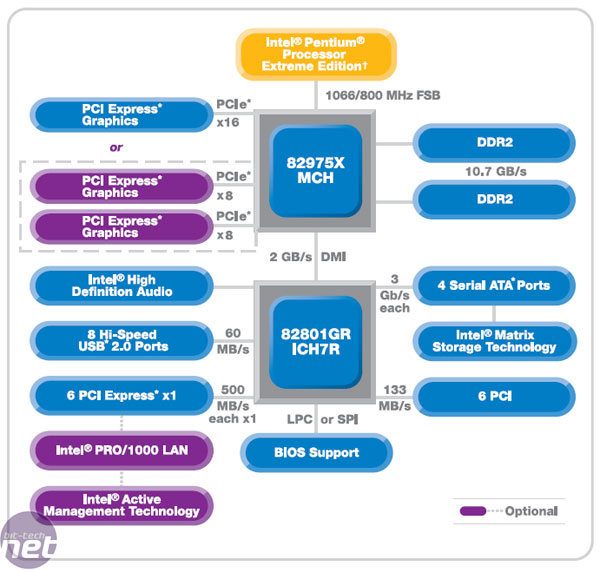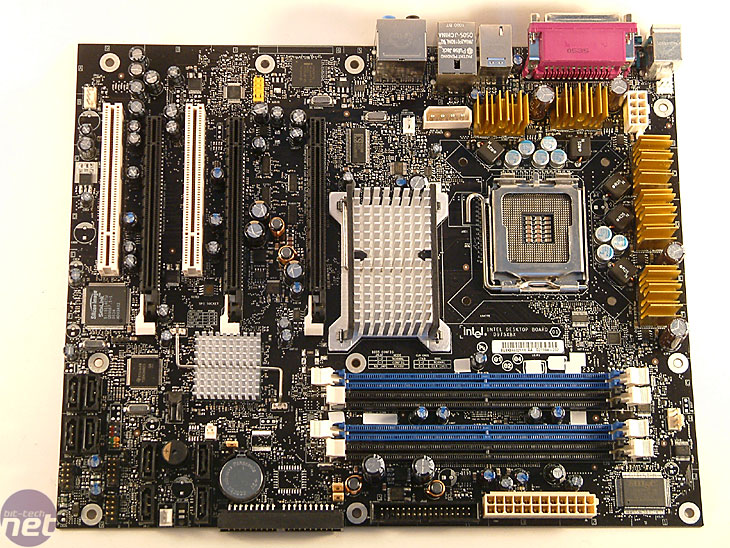
i975X Chipset & D975XBX Desktop board:
Along with the new Pentium Extreme Edition processor, Intel has introduced a new chipset that goes by the name of i975X. In fact, this chipset has been around for a couple of months, but this is the first i975X-based motherboard we've had the chance to look at. The Pentium Extreme Edition 955 will work in any Intel 955X-based motherboard, as well as any motherboard based on NVIDIA's nForce4 SLI Intel Edition chipset. We're not sure whether it works with ATI's Radeon Xpress 200 chipset, as we've not got a motherboard that we can verify this on. However, with the Pentium Extreme Edition 955 already having support with current chipsets, why does Intel need to release another chipset?
i975X chipset block diagram
Memory Pipeline Technology delivers enhanced memory efficiency and utilisation thanks to increased memory pipelining, which is said to increase performance in memory-intensive operations and tasks. Along with this, the 975X chipset incorporates a Memory Controller Hub backbone architecture, which includes wider internal data buses that support dual channel DDR2 memory at speeds of up to 667MHz.

D975XBX - Intel 975X Desktop board
There is support for a front side bus of either 800MHz or 1066MHz, meaning that all current and previous LGA775 CPUs are supported by the new chipset. It's also worth noting that the i975X chipset supports both synchronous and asynchronous memory, allowing you to get the most out of your DDR2 667MHz memory modules.
The D975XBX desktop board that Intel has sent us with this CPU comes with three PCI-Express x16 slots. Only the right-most slot supports a full 16 PCI-Express lanes - the remaining two slots support 8 PCI-Express lanes and are used instead of the primary slot when running two cards in a multi-GPU configuration. Lets not forget that - due to the nature of PCI-Express - it's also possible to use one or both of the PCI-Express x8 slots as expansion slots for PCI-Express x1 and x4 cards.


Interestingly, the board only comes with a single Ethernet socket, but we're sure that some board manufacturers will opt for a dual Ethernet solution. Many of them did with Intel's 955X chipset, and the likes of ASUS also implemented a WiFi card into its P5WD2 Premium motherboard. We're expecting the same from ASUS this time around, too.

MSI MPG Velox 100R Chassis Review
October 14 2021 | 15:04






Want to comment? Please log in.